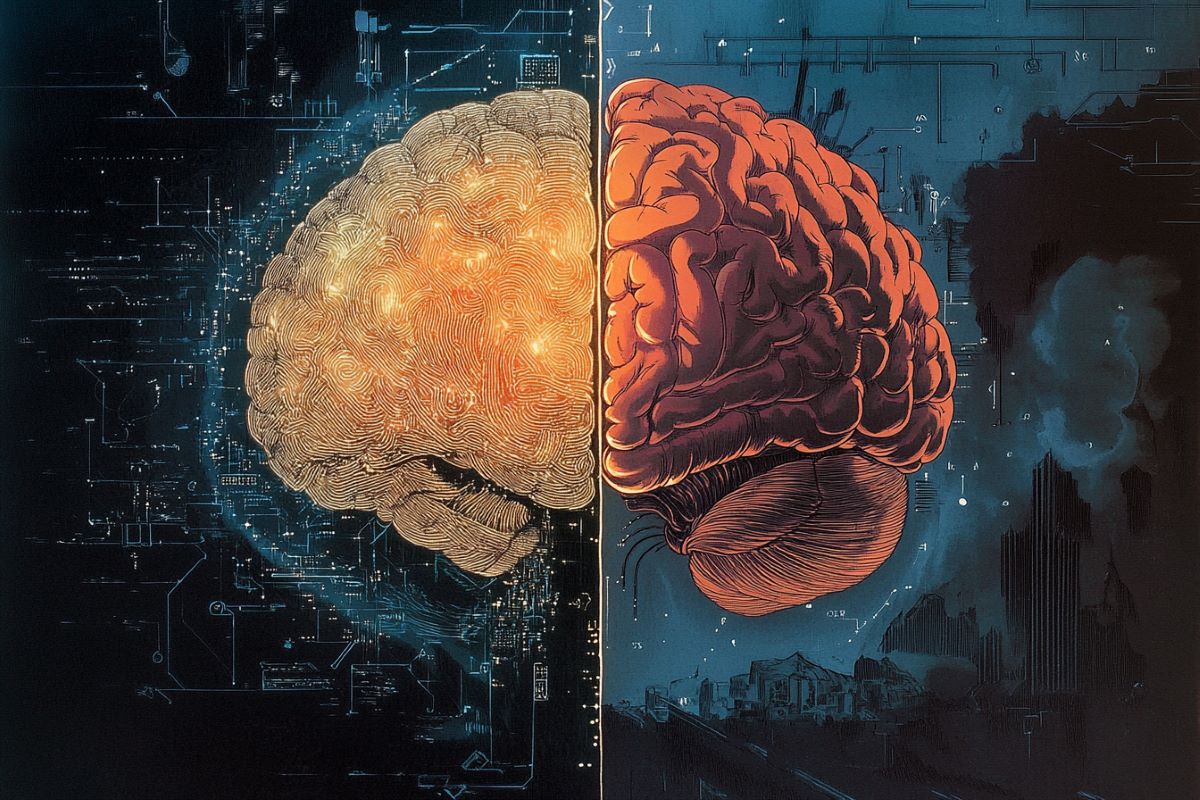Summary: A new study reveals that humans think at a rate of 10 bits per second, while sensory systems process a billion bits per second—100 million times faster. This highlights a paradox: why does the brain process thoughts so slowly when sensory input is so vast?
Researchers propose that the brain’s evolution prioritized focusing on single “paths” of thought, akin to navigating abstract concept spaces. These findings challenge notions of brain-computer interfaces enabling faster communication, as the brain’s inherent speed limit persists.
Key Facts:
- Thought Speed: Human thought processes occur at 10 bits per second, far slower than sensory systems’ billion-bit input rate.
- Brain Evolution: The brain’s single-focus constraint may stem from evolutionary adaptations for navigation and decision-making.
- Neural Interfaces: Direct brain-computer interfaces would still operate at the brain’s natural 10 bits-per-second speed.
Source: CalTech
Caltech researchers have quantified the speed of human thought: a rate of 10 bits per second. However, our bodies’ sensory systems gather data about our environments at a rate of a billion bits per second, which is 100 million times faster than our thought processes.
This new study raises major new avenues of exploration for neuroscientists, in particular: Why can we only think one thing at a time while our sensory systems process thousands of inputs at once?
Video credit: Neuroscience News
The research was conducted in the laboratory of Markus Meister (PhD ’87), the Anne P. and Benjamin F. Biaggini Professor of Biological Sciences, and it was led by graduate student Jieyu Zheng. A paper describing the study appears in the journal Neuron on December 17.
A bit is a basic unit of information in computing. A typical Wi-Fi connection, for example, can process 50 million bits per second.
In the new study, Zheng applied techniques from the field of information theory to a vast amount of scientific literature on human behaviors such as reading and writing, playing video games, and solving Rubik’s Cubes, to calculate that humans think at a speed of 10 bits per second.
“This is an extremely low number,” Meister says.
“Every moment, we are extracting just 10 bits from the trillion that our senses are taking in and using those 10 to perceive the world around us and make decisions. This raises a paradox: What is the brain doing to filter all of this information?”
There are over 85 billion neurons in the brain, with one third of these dedicated to high-level thinking and located in the cortex. Individual neurons are powerful information processors and can easily transmit more than 10 bits per second of information.
But why don’t they? And why do we have so many if we’re thinking so slowly?
Meister suggests that, given the discovery of this “speed limit” in the brain, neuroscience research ought to consider these paradoxes in future studies.
Another conundrum that the new study raises is: Why does the brain process one thought at a time rather than many in parallel the way our sensory systems do?
For example, a chess player envisioning a set of future moves can only explore one possible sequence at a time rather than several at once. The study suggests that this is perhaps due to how our brains evolved.
Research suggests that the earliest creatures with a nervous system used their brains primarily for navigation, to move toward food and away from predators. If our brains evolved from these simple systems to follow paths, it would make sense that we can only follow one “path” of thought at a time.
“Human thinking can be seen as a form of navigation through a space of abstract concepts,” Zheng and Meister write.
The team emphasizes the need for future research into how this constraint—one train of thought at a time—is encoded in the architecture of the brain.
“Our ancestors have chosen an ecological niche where the world is slow enough to make survival possible,” Zheng and Meister write.
“In fact, the 10 bits per second are needed only in worst-case situations, and most of the time our environment changes at a much more leisurely pace.”
The new quantification of the rate of human thought may quash some science-fiction futuristic scenarios. Within the last decade, tech moguls have suggested creating a direct interface between human brains and computers in order for humans to communicate faster than the normal pace of conversation or typing.
The new study, however, suggests that our brains would communicate through a neural interface at the same speed of 10 bits per second.
Funding: Funding was provided by the Simons Collaboration on the Global Brain and the National Institutes of Health. Markus Meister is an affiliated faculty member with the Tianqiao and Chrissy Chen Institute for Neuroscience at Caltech.
About this neuroscience research news
Author: Lori Dajose
Source: CalTech
Contact: Lori Dajose – CalTech
Image: The image is credited to Neuroscience News
Original Research: Closed access.
“The unbearable slowness of being: Why do we live at 10 bits/s?” by Markus Meister et al. Neuron
Abstract
The unbearable slowness of being: Why do we live at 10 bits/s?
This article is about the neural conundrum behind the slowness of human behavior. The information throughput of a human being is about 10 bits/s. In comparison, our sensory systems gather data at ∼10 to the power of 9 bits/s.
The stark contrast between these numbers remains unexplained and touches on fundamental aspects of brain function: what neural substrate sets this speed limit on the pace of our existence? Why does the brain need billions of neurons to process 10 bits/s? Why can we only think about one thing at a time?
The brain seems to operate in two distinct modes: the “outer” brain handles fast high-dimensional sensory and motor signals, whereas the “inner” brain processes the reduced few bits needed to control behavior.
Plausible explanations exist for the large neuron numbers in the outer brain, but not for the inner brain, and we propose new research directions to remedy this.








